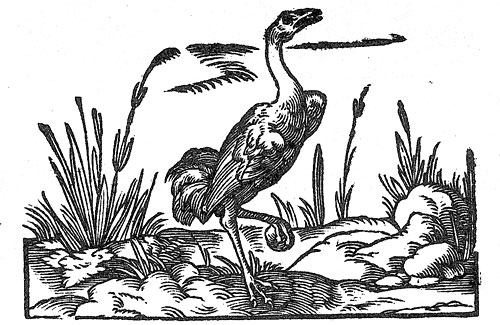Küchelmann, Hans Christian (2009): Vornehme Mahlzeiten: Tierknochen aus dem Dominikanerkloster Norden, Bericht für den Archäologischen Dienst der Ostfriesischen Landschaft, Bremen
[Noble Meals: Animal Bones from the Dominican Monastery Norden]
report submitted to the Archaeological Service of the Ostfriesische Landschaft
Abstract
Analysis of a medium-sized assemblage of animal bones from the Dominican monastery at Norden provided us with an insight into the diet of its inhabitants. Noticeable is the distinct difference between the composition of the remains dating from the construction phase of the monastery (13th–14th century) and that from the later phase (15th–16th century). In the early phase mainly fish was consumed, while in the later phase there is clear evidence for a high social status, i.e. the remains indicate a high percentage of juvenile sheep/goat and a broad range of wild bird and fish species. Further, the sample contains
remains of species that were explicitly connected with wealth and a privileged status in medieval times, such as game, porpoise and sturgeon. A surprising find is a fragment of swordfish. The composition of the diet in the later phase contrasts with the historically documented strict dietary rules of the Dominican monks and suggests a change in ethical values.
Download (pdf 6,6 MB)
Download (pdf 6,6 MB)
Published in
• Küchelmann, Hans Christian (2010): Vornehme Mahlzeiten: Tierknochen aus dem Dominikanerkloster Norden. – Nachrichten aus Niedersachsens Urgeschichte 79, 155-200
• Küchelmann, Hans Christian (2010): Vom mehr oder weniger armen Leben der Bettelmönche. – Archäologie in Niedersachsen 13, 83-85
• Küchelmann, Hans Christian (2012): Noble Meals instead of Abstinence? A faunal Assemblage from the Dominican Monastery of Norden, Northern Germany. in: Lefèvre, Christine (ed.): Proceedings of the General Session of the 11th International Council for Archaeozoology Conference (Paris, 23-28 August 2010), British Archaeological Reports International Series 2354, 87-97, Oxford


Küchelmann, Hans Christian (2009): Vornehme Mahlzeiten: Tierknochen aus dem Dominikanerkloster Norden, Bericht für den Archäologischen Dienst der Ostfriesischen Landschaft, Bremen
[Noble Meals: Animal Bones from the Dominican Monastery Norden]
report submitted to the Archaeological Service of the Ostfriesische Landschaft
Abstract
Analysis of a medium-sized assemblage of animal bones from the Dominican monastery at Norden provided us with an insight into the diet of its inhabitants. Noticeable is the distinct difference between the composition of the remains dating from the construction phase of the monastery (13th–14th century) and that from the later phase (15th–16th century). In the early phase mainly fish was consumed, while in the later phase there is clear evidence for a high social status, i.e. the remains indicate a high percentage of juvenile sheep/goat and a broad range of wild bird and fish species. Further, the sample contains
remains of species that were explicitly connected with wealth and a privileged status in medieval times, such as game, porpoise and sturgeon. A surprising find is a fragment of swordfish. The composition of the diet in the later phase contrasts with the historically documented strict dietary rules of the Dominican monks and suggests a change in ethical values.
Download (pdf 6,6 MB)
Download (pdf 6,6 MB)
Published in
• Küchelmann, Hans Christian (2010): Vornehme Mahlzeiten: Tierknochen aus dem Dominikanerkloster Norden. – Nachrichten aus Niedersachsens Urgeschichte 79, 155-200
• Küchelmann, Hans Christian (2010): Vom mehr oder weniger armen Leben der Bettelmönche. – Archäologie in Niedersachsen 13, 83-85
• Küchelmann, Hans Christian (2012): Noble Meals instead of Abstinence? A faunal Assemblage from the Dominican Monastery of Norden, Northern Germany. in: Lefèvre, Christine (ed.): Proceedings of the General Session of the 11th International Council for Archaeozoology Conference (Paris, 23-28 August 2010), British Archaeological Reports International Series 2354, 87-97, Oxford